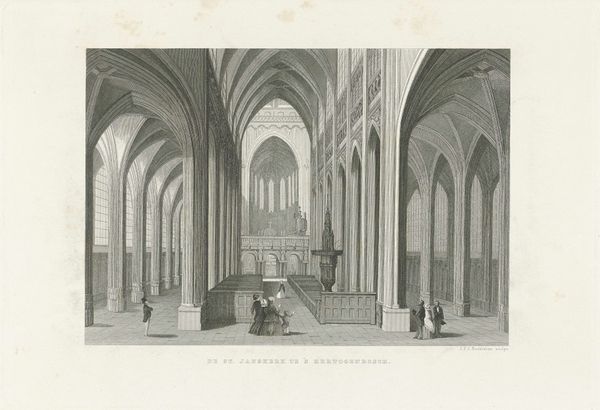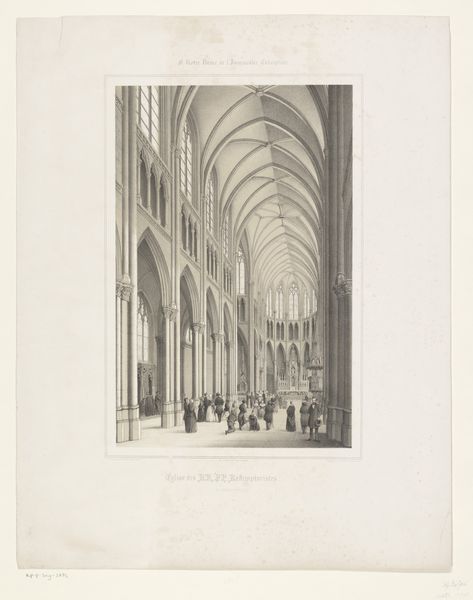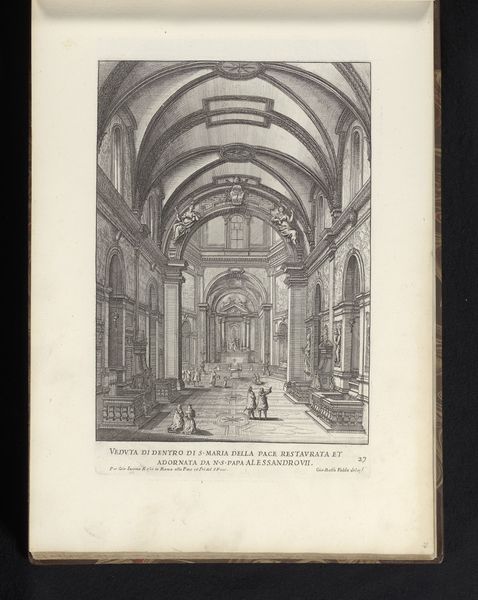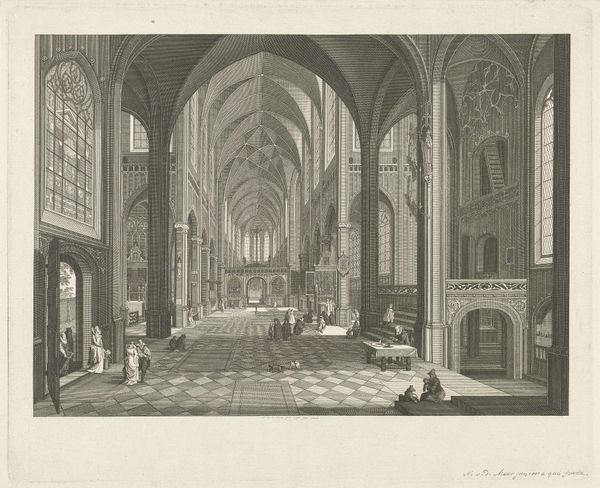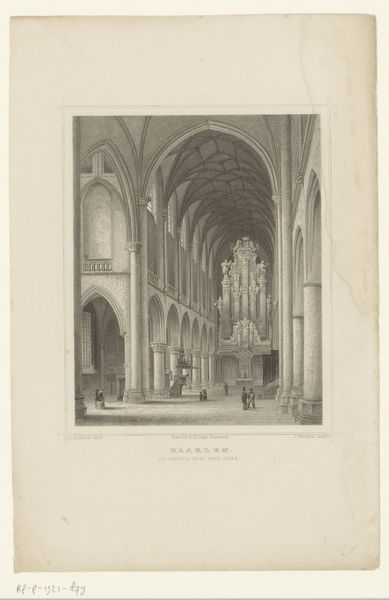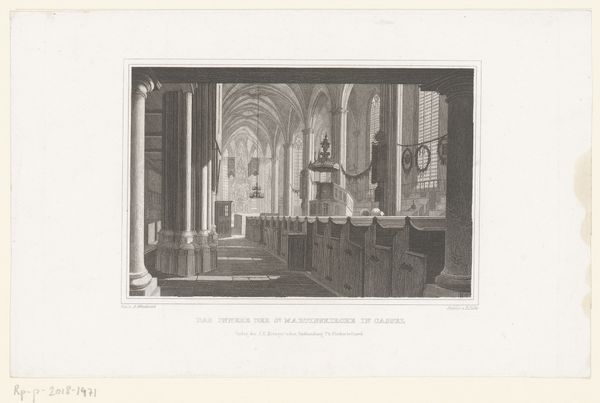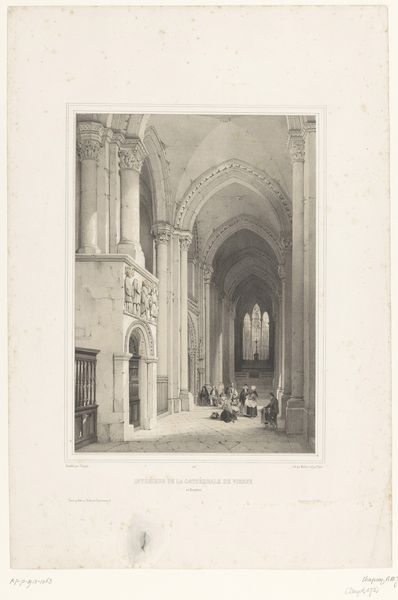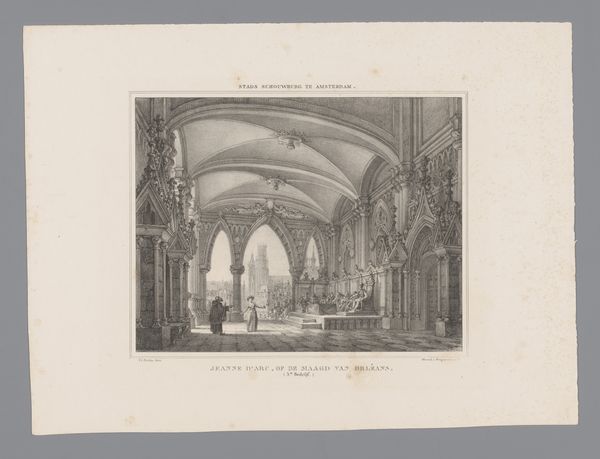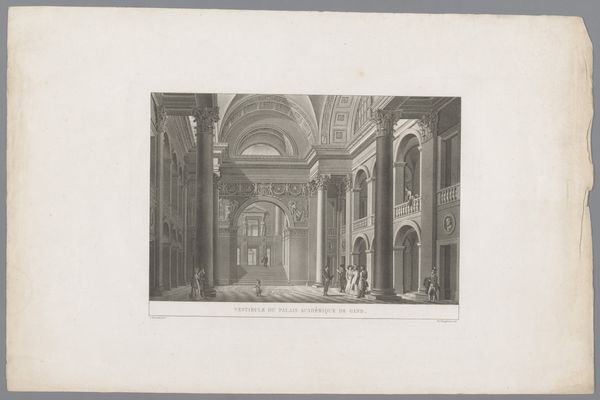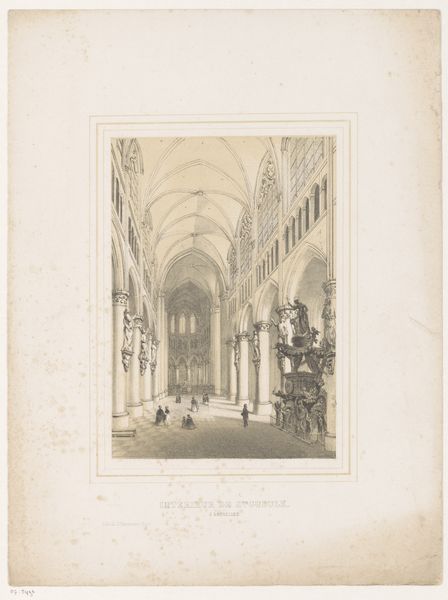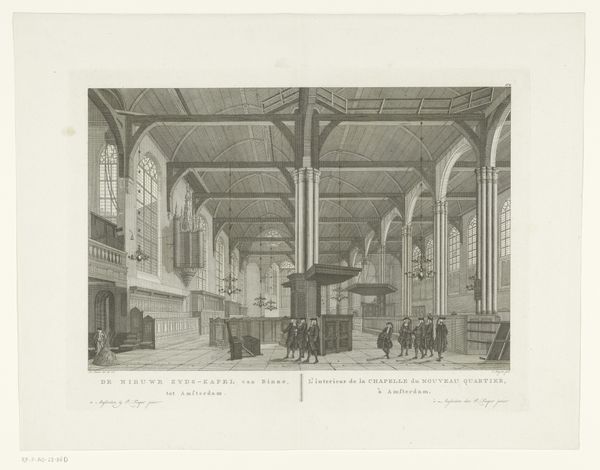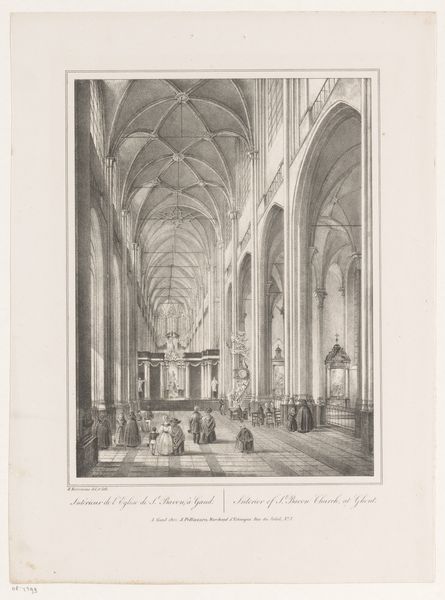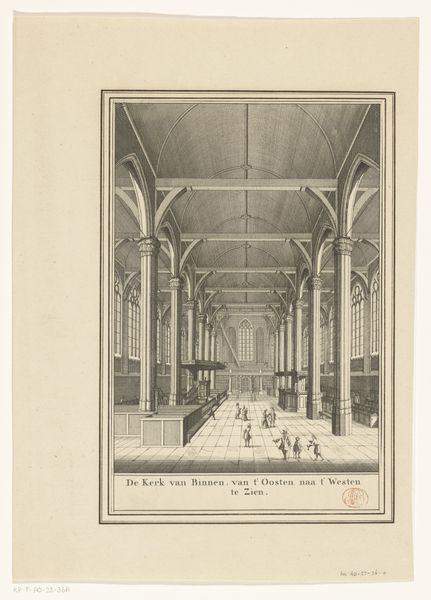
print, engraving
# print
#
landscape
#
romanticism
#
history-painting
#
engraving
Dimensions: height 150 mm, width 232 mm
Copyright: Rijks Museum: Open Domain
Editor: This print, "Bibliotheek van Göttingen," created between 1832 and 1852 by Johann Gabriel Friedrich Poppel, depicts the interior of a grand library. The details are quite impressive! What stands out to me is how the artist managed to portray the sheer scale of the library with such delicate engraving. What are your thoughts when you see this image? Curator: What interests me immediately is not just the visual representation, but the means of production here. This isn’t just an image; it’s an artifact of 19th-century printing technology. Think about the labour involved in creating the engraving, the materials used - the metal plate, the inks, the paper - and the social context surrounding the dissemination of knowledge at the time. Editor: That's a fascinating point. I hadn't considered the print itself as a product of labour and material resources. Does the fact that it's a print, rather than, say, a painting, affect how we should interpret its depiction of the library? Curator: Absolutely! Prints were much more reproducible and affordable than paintings. The creation of this engraving democratized access to images of significant cultural sites like the Göttingen library, facilitating broader engagement with knowledge and learning beyond the elite. Editor: So, you are suggesting that this engraving serves not just as an image of a library, but also speaks to a broader movement of making knowledge accessible through technological advances in printmaking? Curator: Precisely. Consider the role of the printing press in shaping public opinion and spreading new ideas during that period. The materiality of this print reflects this drive toward accessibility and the expanding circulation of knowledge. Editor: That's truly enlightening. I will consider this printmaking process as an integral element of understanding its meaning, in terms of material context, and democratization of imagery in the nineteenth century. Curator: And in turn consider how even a "simple" image of an interior holds complex economic and social implications for its original audience and potentially still for us today!
Comments
No comments
Be the first to comment and join the conversation on the ultimate creative platform.

